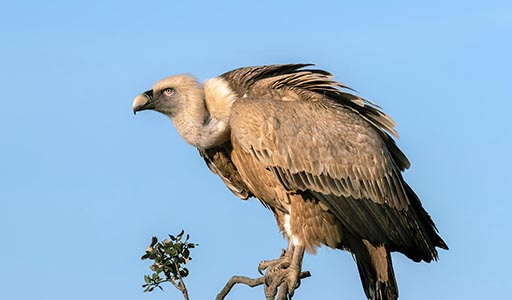Vultures

Vulture Information
Vultures, also known as buzzards, are large scavengers that can occasionally make their way into residential areas. While not technically a threat, these birds often travel in big groups, and their large numbers can quickly turn the otherwise mild inconvenience of their presence into a major aggravation. Vultures’ tendency to pick at roofing and leave behind large volumes of waste can make them quite a nuisance, one that’s not especially easy to get rid of. It’s against federal law to harm or exterminate vultures, and many of the methods homeowners could use to deter these large birds are unsightly and expensive, as well as difficult to implement. Plus, there’s no guarantee you’ll get the results you desire; vultures can be pretty stubborn creatures when they find an area they like.

What does a Vulture look like?
Turkey vultures are very large birds, reaching two to three feet long with wingspans of up to six feet. From a distance, these pests look black, but they actually have brown feathers, red featherless heads, and white beaks. Their tails extend well past their feet. Black vultures’ tails are much shorter, ending at the tips of their toes. Unlike turkey vultures’ V-shaped posture, they also hold their wings nearly flat.

What does a Vulture eat?
Using their heightened sense of smell, turkey vultures locate and feed on carrion. They prefer freshly dead mammals, but will also eat carcasses from reptiles, fish, other birds, and even insects. Given their food of choice, the pests need their hardy immune systems to protect them against diseases common in raw meat like botulism, salmonellosis, and cholera.

Vulture habitats
These opportunistic birds can be found mainly in suburban and rural areas, though vultures will live wherever food is plentiful. Landfills and other large collections of garbage attract them. The pests are often soaring in the air by morning looking for the day’s catch and perch on fence posts, trees, or other elevated spots for the night. Turkey vultures nest along ledges and in rock crevices, caves, hollow logs, abandoned nests, and even barns or other buildings.


